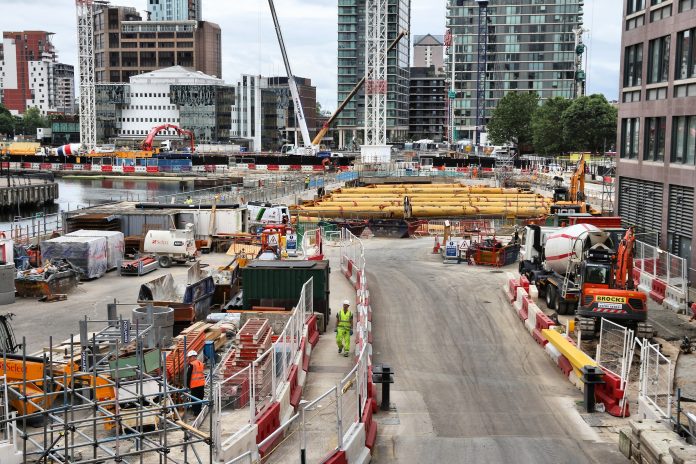The government must ‘set a good example’ when it comes to paying its construction supply chains and handing out retention payments to subcontractors during the COVID-19 crisis, says Construction Leadership Council member
In comments during a Building Engineering Services Association (BESA) webinar, Ann Bentley, global board director of Rider Levett Bucknall, said that both public and private sector clients should ensure cash was available to SMEs to help them survive the current upheaval.
Bentley said: “The CLC has put pressure on government departments to show the way on payment.
“While the initial reaction was supportive there has been some rowing back with bureaucracy coming into the conversation, which is disappointing.”
The CLC wrote to the PM last week urging him to instruct clients to release £4.5bn, which is currently being withheld from contractors in the form of retention payments, to help relieve some of the cash flow pressures building up in supply chains.
Bentley added: “We feel government departments should be setting a good example.
“After all, the amount of money held in retentions is several magnitudes smaller than what the government is spending on furloughed workers.”
Economic recovery
Bentley also told the webinar that the Cabinet Office was already working on plans for the economic recovery with construction at the forefront. The CLC is lobbying for a quick return of major infrastructure projects as these will have multiple knock-on benefits for society and the wider economy.
“Equally, there are lots of smaller projects that could get up and running very quickly and these will be an important part of the wider economic recovery,” she said.
However, Bentley cautioned that many contracts would have to be renegotiated to help contractors get through the coming weeks.
“This is an industry that operates on very slim margins so many businesses will struggle to sustain low activity levels for much longer.”
She also urged clients to “behave honourably” and said it was up to main contractors to make sure their sites were safe before insisting subcontractors go back to work.
“The onus is on them to demonstrate to us that their sites are safe,” said Bentley.
“Most of the biggest firms recognise this, but there is a tier of contractors who don’t get it. They will be in breach of contract if they don’t provide safe working conditions and you can’t force people to work on unsafe sites – that’s illegal.”
There have been “fantastic examples” of clients working hard to support their supply chains with a number keeping up payments even when subcontractors are not working, according to Bentley. However, there are others who are trying to take advantage of the situation to cut their own costs.
She concluded: “My fear is that some sharp operators out there will simply see this as an opportunity to re-tender everything to save 10%.”

















